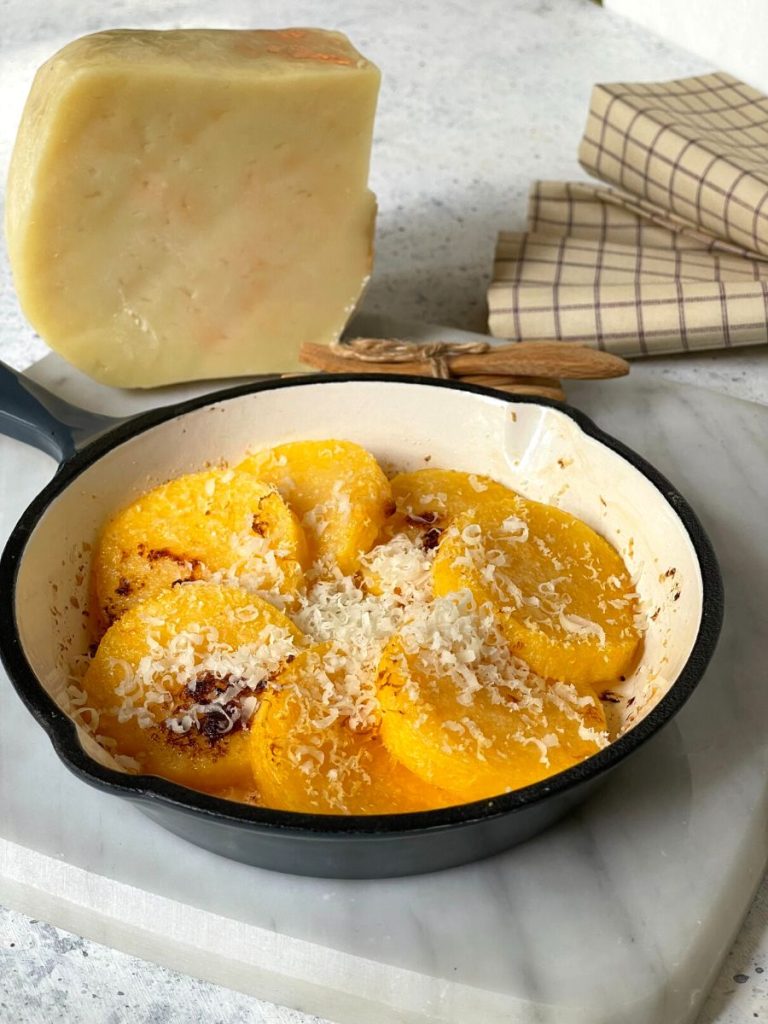
- Difficulty: Very easy
- Cost: Economical
- Rest time: 4 Hours
- Preparation time: 30 Minutes
- Portions: 4 servings
- Cooking methods: Stovetop
- Cuisine: Italian
- Seasonality: Fall, Winter
- Energy 356.62 (Kcal)
- Carbohydrates 46.37 (g) of which sugars 2.02 (g)
- Proteins 6.51 (g)
- Fat 16.79 (g) of which saturated 10.45 (g)of which unsaturated 5.60 (g)
- Fibers 2.23 (g)
- Sodium 563.93 (mg)
Indicative values for a portion of 10 g processed in an automated way starting from the nutritional information available on the CREA* and FoodData Central** databases. It is not food and / or nutritional advice.
* CREATES Food and Nutrition Research Center: https://www.crea.gov.it/alimenti-e-nutrizione https://www.alimentinutrizione.it ** U.S. Department of Agriculture, Agricultural Research Service. FoodData Central, 2019. https://fdc.nal.usda.gov
Fossa Cheese DOP
Fossa cheese from Sogliano is a typical fossa cheese originating from Sogliano al Rubicone (FC), but also historically produced in Talamello (RN) and Sant’Agata Feltria (RN). Today, it is produced in several municipalities of Montefeltro and the Metauro Valley. Unlike other localities, Talamello is the only one that, as tradition dictates, buries the cheese only once a year to achieve the highest quality. On the other hand, Sogliano’s production seems to be the oldest.
In November 2009, at the European level, the designation Fossa Cheese from Sogliano and Talamello was recognized as a protected designation of origin (DOP).
Fossa cheese can be pure sheep or mixed (meaning cow’s and sheep’s milk) and is aged for three months in typical oval-shaped pits carved into the rock.
The aging technique of cheese in pits has very ancient origins. This type of cheese is mentioned in two inventories from 1497 and 1498. From both documents, it is clear that the tuff pit had a dual use: in autumn, it was a place for cheese preservation, and at different times of the year, it was used to store grain to protect it from soldiers’ raids. The cheese producer rented the pit for the time necessary for aging, three months or a maximum of 100 days. The cheese was placed, as it is done today, in cloth bags covered with hay straw to isolate it from the air.
The traditional burying period was late August-September; the reopening of the pits took place on November 25, the day of Saint Catherine. This period was chosen because in spring-summer there was a greater abundance of pasture, thus greater milk production, and there was a need to transform the milk into cheese for less productive periods. The cheese was then consumed starting from winter.
The “Sagra del formaggio di fossa di Sogliano al Rubicone” is held every year on the last two Sundays of November and the first of December. During the festival, the fossa cheese market is specially set up; for the event, it is possible to visit directly the companies that age the cheese in their “pits.” On the Sundays of the festival, the “pits” are open to the public.
On the Visit Sogliano al Rubicone website you can find all the information to visit the city and participate in the fair.

